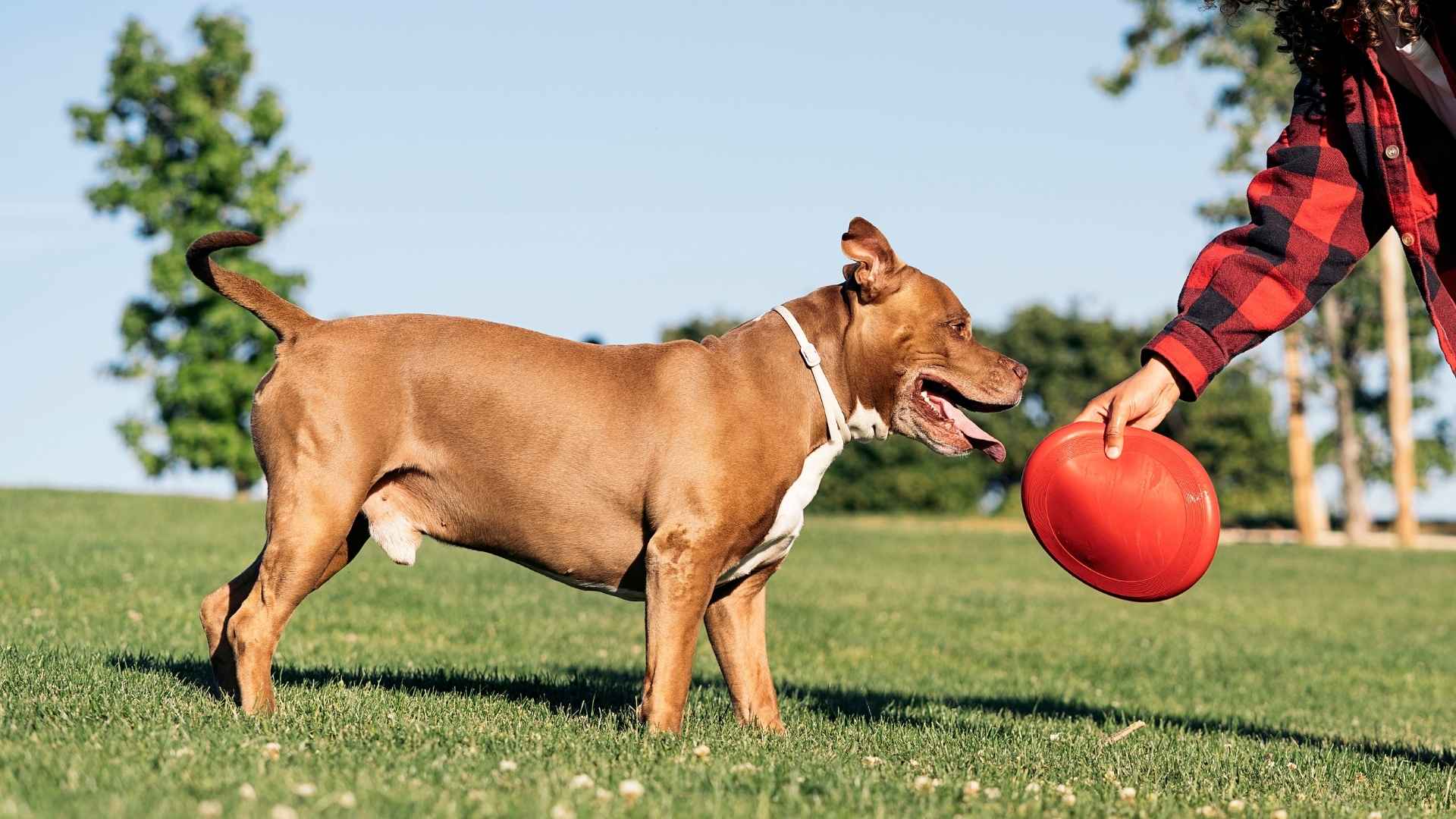Did you know that many of the world’s most sociable dogs were originally bred for the great outdoors? Sporting dogs, with their boundless energy and keen instincts, have a long history of working alongside humans—yet it’s their friendly, people-loving nature that truly makes them shine. These dogs aren’t just athletes; they’re loyal companions, eager playmates, and affectionate family members.
Whether chasing a ball, exploring a trail, or simply lounging at your feet, sporting breeds thrive on connection and purpose. Their natural enthusiasm and sharp intelligence make them easy to train and a joy to have around, especially in active households.
What sets them apart is a heart as big as their stamina, always ready to greet you with a wagging tail and an excited nudge. If you’re looking for a canine companion who’s as friendly as they are fun-loving, the sporting group is full of joyful possibilities waiting to be explored.
Friendly Sporting Dog Breeds
1. Flat-Coated Retriever
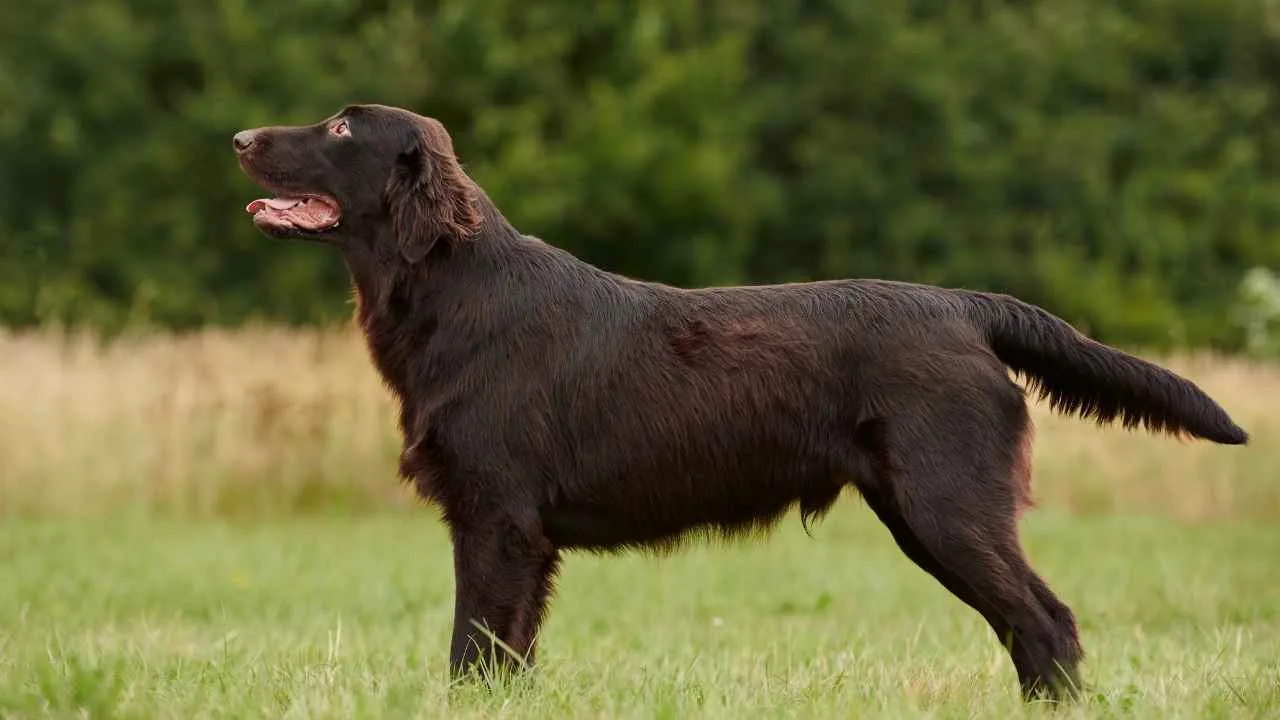
The Flat-Coated Retriever, often referred to as the “Peter Pan of the Sporting Group,” is a joyful and energetic breed that remains youthful in spirit throughout its life. Known for their happy and self-assured demeanor, these dogs are versatile workers, excelling in both retrieving waterfowl and participating in a variety of dog sports.
A highly energetic breed, Flat-Coated Retrievers require ample outdoor exercise. They are natural water lovers, and their retrieving instincts make them a perfect choice for active families who enjoy outdoor activities like hiking or swimming.
Flat-Coats are known for their slow maturation, often retaining their playful, puppy-like behavior into adulthood. This trait can be endearing or challenging, depending on a family’s tolerance for high energy and occasional mischief. However, with proper training and outlets for their curiosity, they thrive in environments that offer physical and mental challenges.
Hillspets states a Flat-Coated Retrievers are quick learners, excelling in obedience and agility training. Positive reinforcement is key, as these dogs respond best to a nurturing and reward-based approach. With the right guidance, they become well-mannered and eager participants in a variety of dog sports.
Ideal activities for this breed include obstacle courses, scent tracking, dock diving, swimming, and disc games. Flat-Coats love tasks that involve both physical and mental engagement, and they excel when their family is involved in these activities.
2. German Shorthaired Pointer
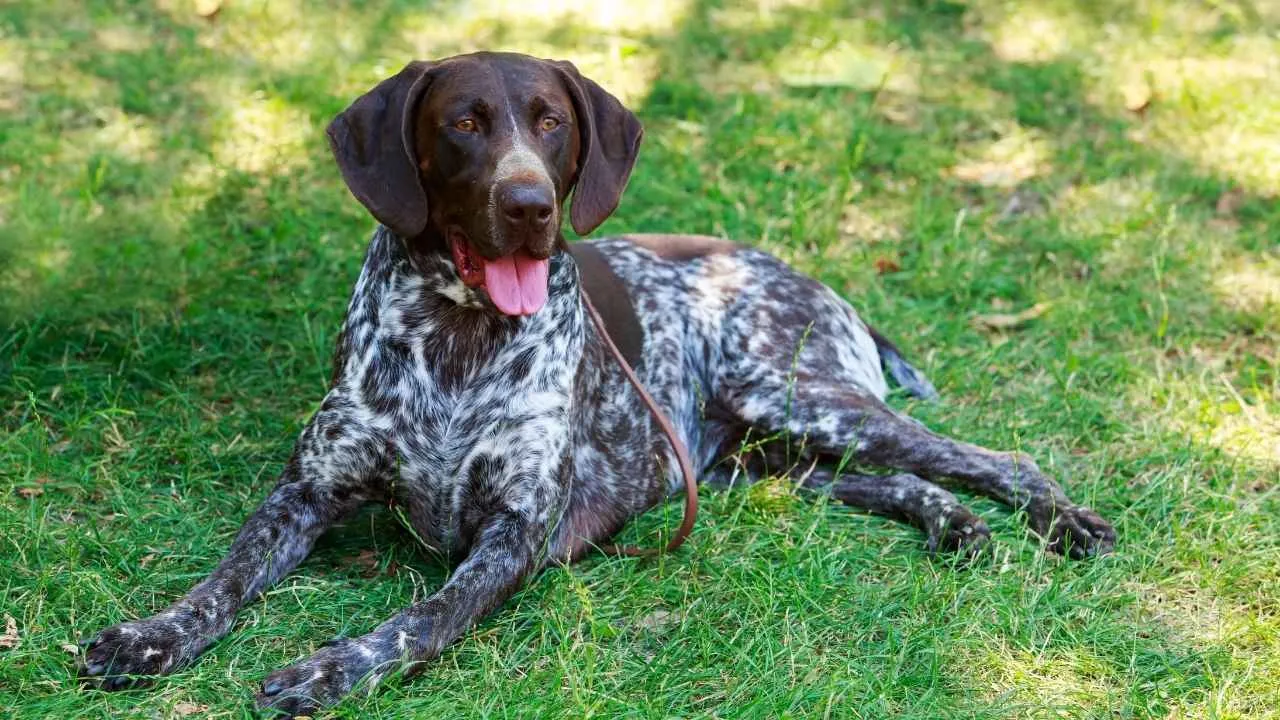
The German Shorthaired Pointer (GSP) is a medium-sized, versatile gundog known for its noble appearance and boundless energy. Males stand 23-25 inches and weigh 55-70 pounds, while females are slightly smaller. Their coat is typically solid liver or liver and white, and their dark eyes reflect enthusiasm and friendliness. Built for agility, power, and endurance, GSPs thrive in active environments.
GSPs require extensive physical and mental stimulation, making them ideal for activities like running, swimming, and dog sports. Daily exercise, such as brisk walks or play in a fenced area, is necessary to keep them happy. They excel in sports like agility, obedience, and dock diving, providing an outlet for their energy.
Early training and socialization are essential for GSPs, as they are intelligent but can become destructive without consistent guidance. Puppy classes and basic obedience training are important to ensure proper behavior, especially during their high-energy period from 6 months to 3 years old.
This breed thrives when given tasks and challenges, making them perfect for active owners. GSPs need mental and physical outlets, and they form strong bonds with their owners through shared activities and training. Their eagerness to please makes them highly trainable.
Known for their swimming ability, GSPs have webbed feet and a muscular build, though their short coats make them sensitive to cold water. Additionally, they excel in various dog sports, including agility and field trials, making them a versatile choice for owners who enjoy outdoor adventures.
3. Golden Retriever
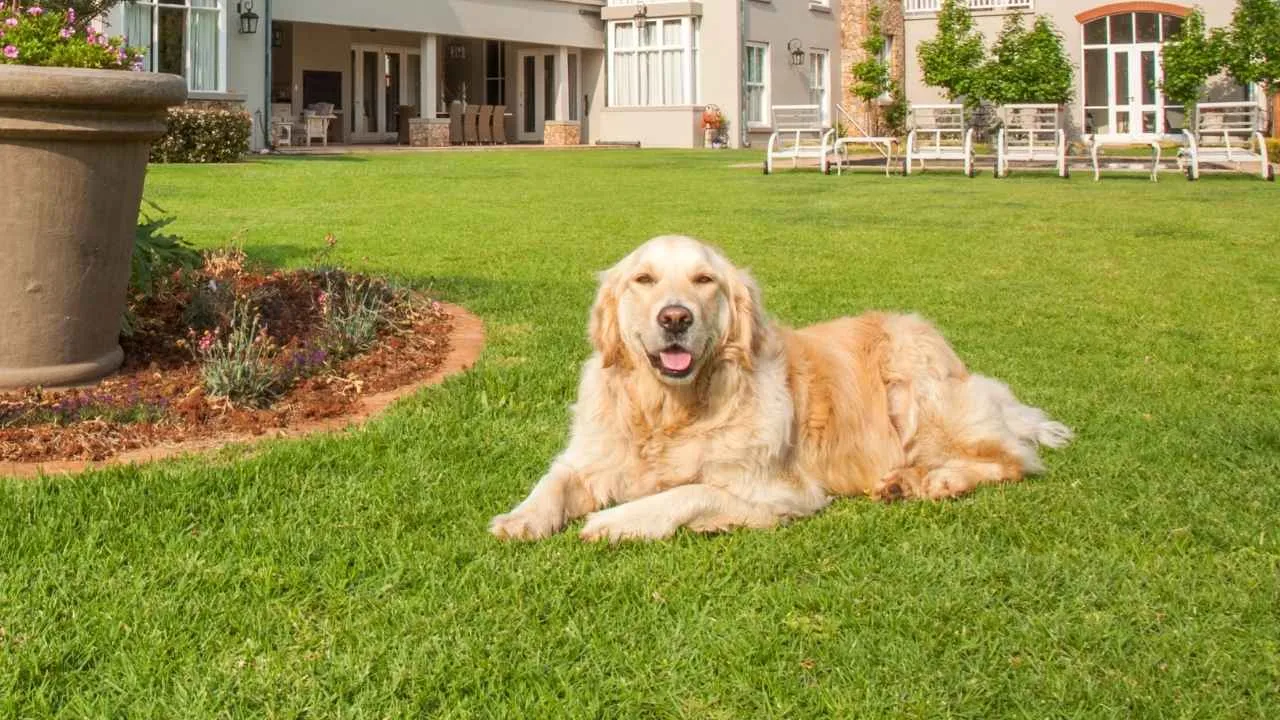
The Golden Retriever is a medium-sized, muscular gundog renowned for its friendly temperament, intelligence, and golden coat. Originally developed in 19th-century Scotland by Lord Tweedmouth, the breed was designed to retrieve game birds with a soft mouth, meaning they could carry prey without causing damage.
This gentleness, along with their loyalty and eagerness to please, has made Goldens a favorite among families and service dog organizations alike.
Built for stamina and strength, Golden Retrievers are energetic dogs that require regular exercise to stay healthy and happy. They thrive in activities like swimming, retrieving, long walks, and canine sports such as agility, obedience, and dock diving. Whether accompanying their owners on runs or enjoying fieldwork, Goldens are always up for physical and mental stimulation.
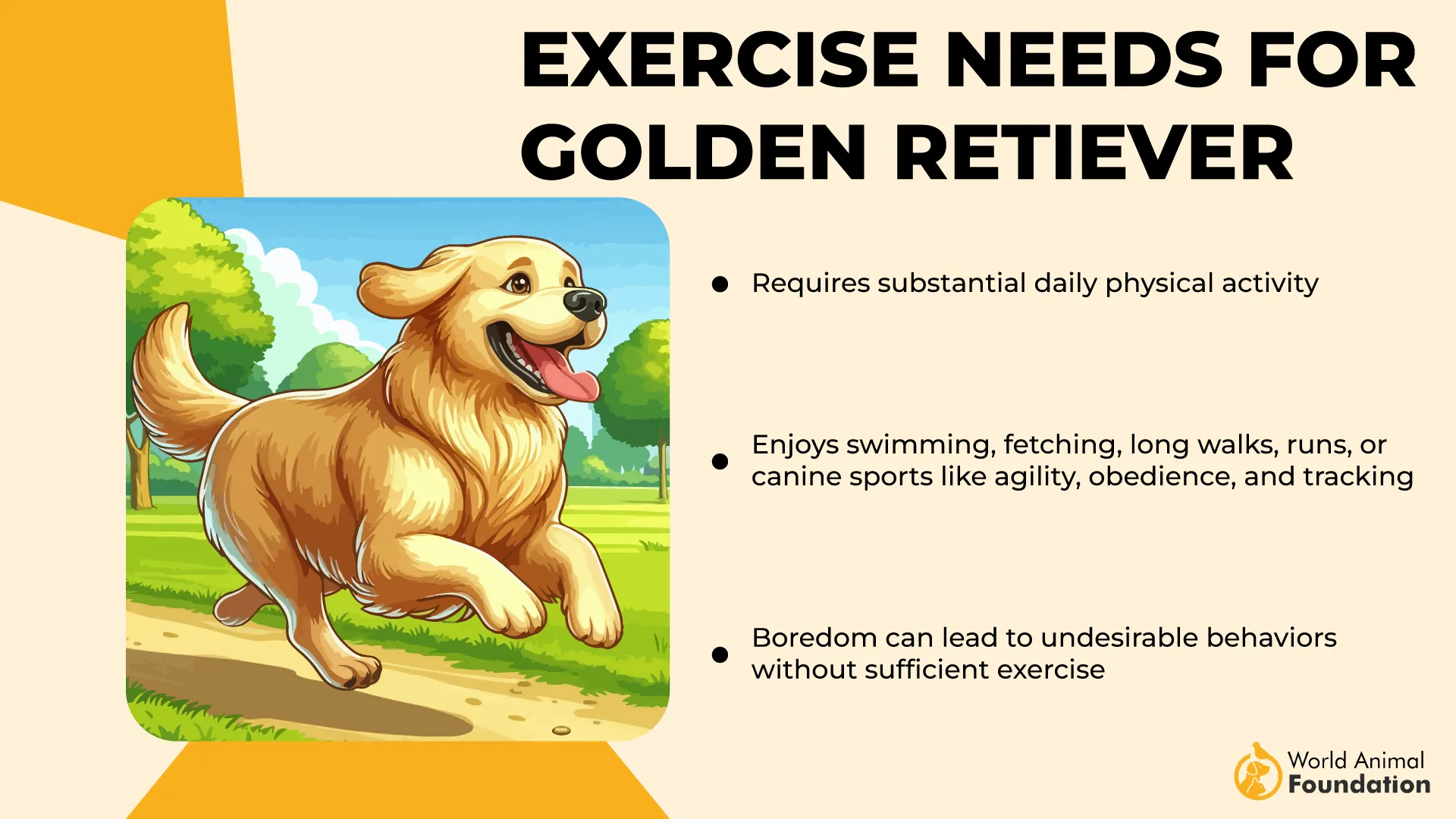
Despite their hunting roots, Golden Retrievers are not aggressive by nature. Their purpose was always retrieval, not attack, which helped shape their calm, patient, and affectionate personalities. These qualities make them well-suited for households with children or other pets and contribute to their popularity as therapy, guide, and rescue dogs.
Training a Golden Retriever is typically straightforward due to their high intelligence and cooperative nature. They respond well to positive reinforcement and maintain a playful, puppy-like demeanor well into adulthood. This combination of brains and a sunny disposition allows them to shine in competitive events and family settings alike.
Their popularity is no accident—Golden Retrievers have consistently ranked among America’s favorite breeds for decades. Their adaptability, coupled with a gentle nature and impressive versatility, continues to endear them to dog lovers seeking a loyal companion who’s just as happy working in the field as they are cuddling at home.
4. Labrador Retriever
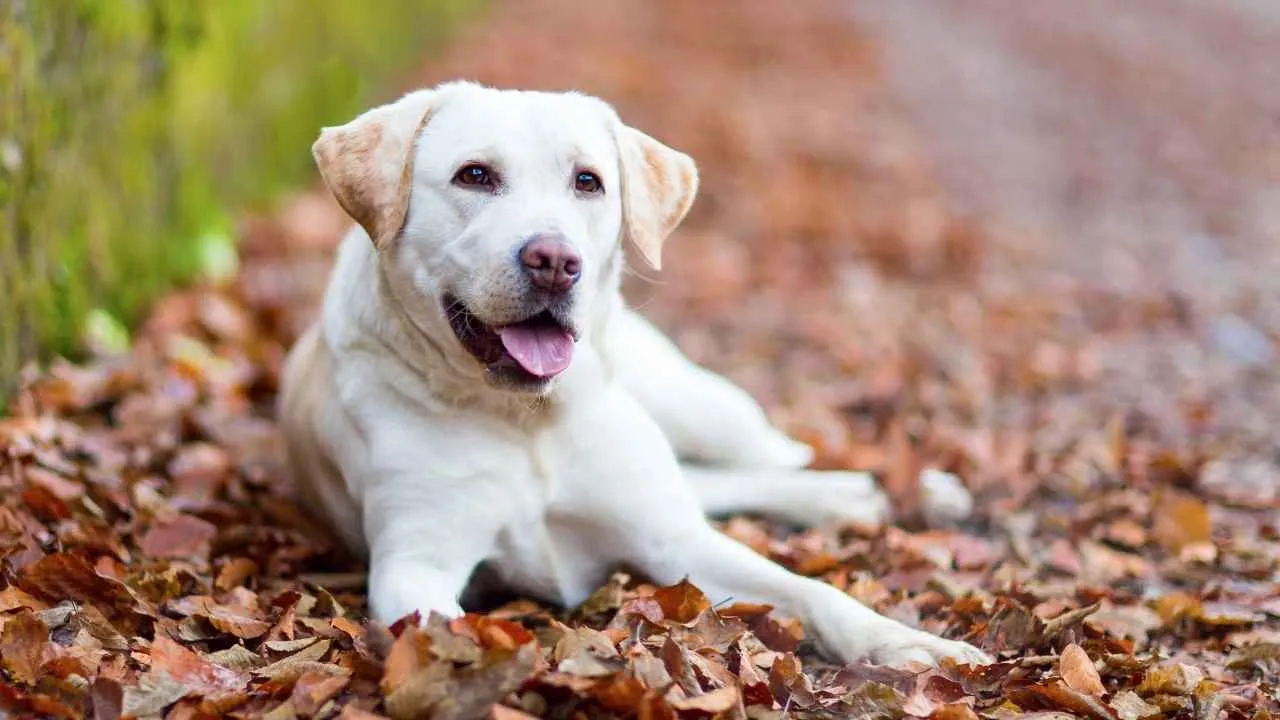
The Labrador Retriever, originally a hardworking Canadian breed, is now the UK’s most beloved dog—and for good reason. Known for their intelligence, eagerness to please, and sociable nature, Labradors make dependable working dogs and affectionate pets. Their friendly demeanor and trainability have earned them roles in service, therapy, and detection work worldwide.
Labs thrive on learning and respond well to positive reinforcement and tone-sensitive commands. Their playful spirit turns training into a fun, rewarding experience. Early recall training is essential, especially when allowing off-leash play in safe areas with other dogs, which provides both physical and mental stimulation.
This breed has a famously large appetite, often linked to a genetic mutation that affects hunger regulation, making them prone to overeating and obesity. While they love vigorous activity, it’s important to moderate exercise during their formative months to avoid joint stress. Swimming is an excellent, low-impact option for older dogs or those with mobility concerns.
Labradors flourish in interactive environments and can become bored or anxious when left alone. Engaging toys, chew items, and sniffing games help occupy their minds. Their love of fetch is deeply rooted in their retrieving heritage, while their extraordinary sense of smell—10,000 times more sensitive than a human’s—makes them exceptional detection dogs, often working in law enforcement and medical fields.
Heroic Labradors like Endal, who saved his unconscious owner, and guide dogs Rochelle and Salty, who led their owners to safety during 9/11, highlight the breed’s loyalty, intelligence, and bravery. Whether serving as family pets or lifesaving companions, Labradors continue to prove why they are one of the world’s most admired and trusted breeds.
5. Irish Setter
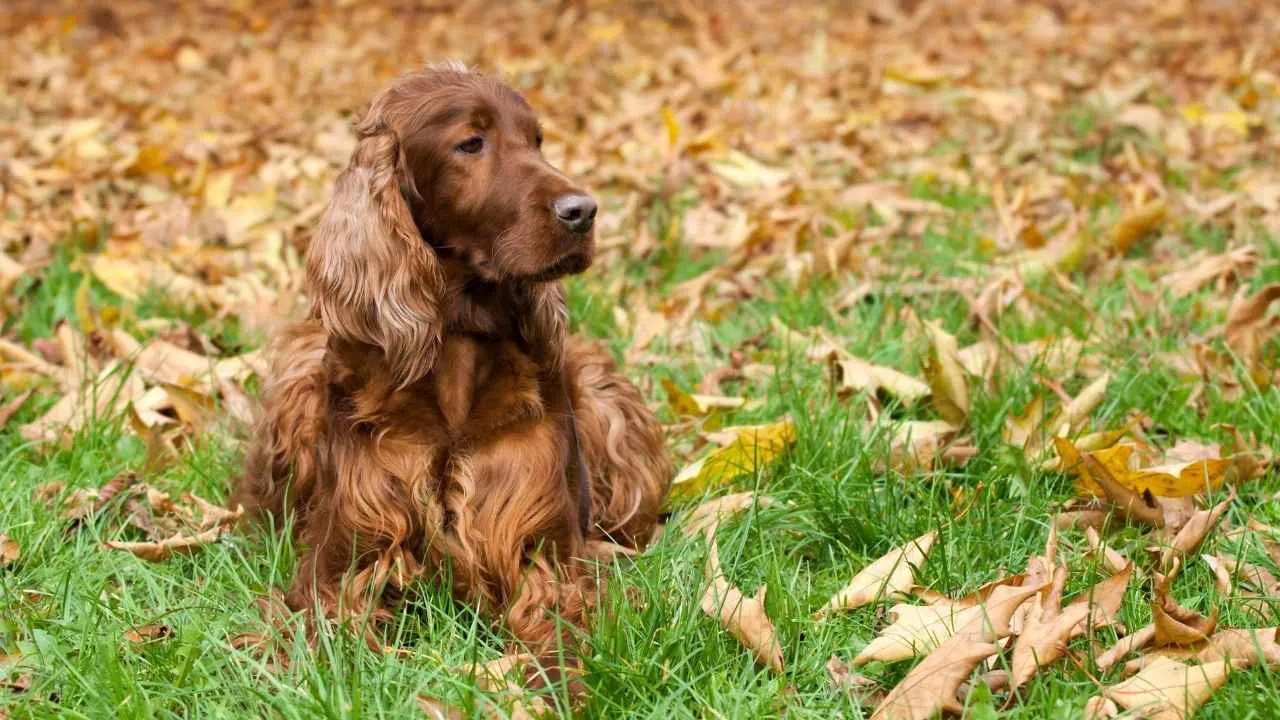
The Irish Setter is a striking and energetic gundog, admired for its flowing red coat, graceful frame, and enthusiastic personality. Originally bred in Ireland for hunting, the breed combines elegance and athleticism, standing over two feet tall with a strong, agile build. Known for speed and endurance, Irish Setters have long been favorites among sportsmen and families alike, thanks to their affectionate nature and lively spirit.
These dogs are famously outgoing and sociable, thriving in environments where they can interact with people and other pets. Their playful, puppy-like demeanor lasts well into adulthood, making them entertaining companions, especially for children. Their cheerful disposition is matched by a bold and spirited approach to work, especially in the field, where their hunting instinct and keen nose shine.
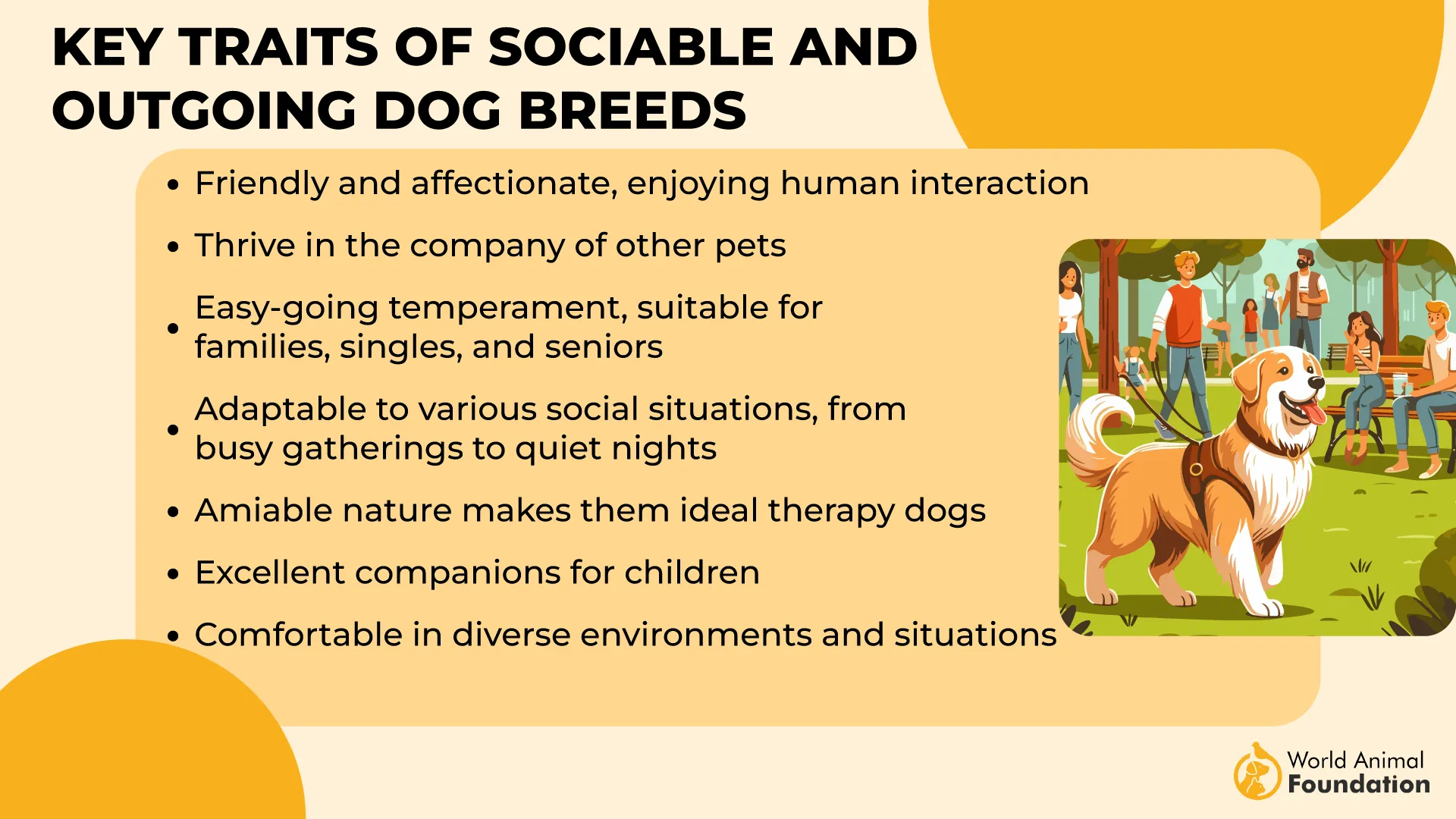
Irish Setters are highly intelligent and eager to learn, but they can also be independent thinkers. Training is most effective when approached with patience, consistency, and positive reinforcement. Harsh methods should be avoided, as the breed responds best to reward-based techniques and engaging sessions. Early socialization and structured puppy classes are essential for shaping a well-mannered adult dog.
AKC states Irish Setters excel in a wide range of canine sports such as agility, rally, dock diving, and flyball. Their energy and versatility also make them suitable candidates for therapy and assistance roles. While active and high-spirited, they are equally gentle and responsive to calm, purposeful guidance.
Historically, the breed gained popularity for its striking red coat, with solid-colored Setters becoming the standard by the 19th century. Irish Setters have even found a place in American presidential history, having been owned by figures like FDR and Ronald Reagan. Their combination of elegance, energy, and charm continues to win hearts both in the field and at home.
6. Nova Scotia Duck Tolling Retriever
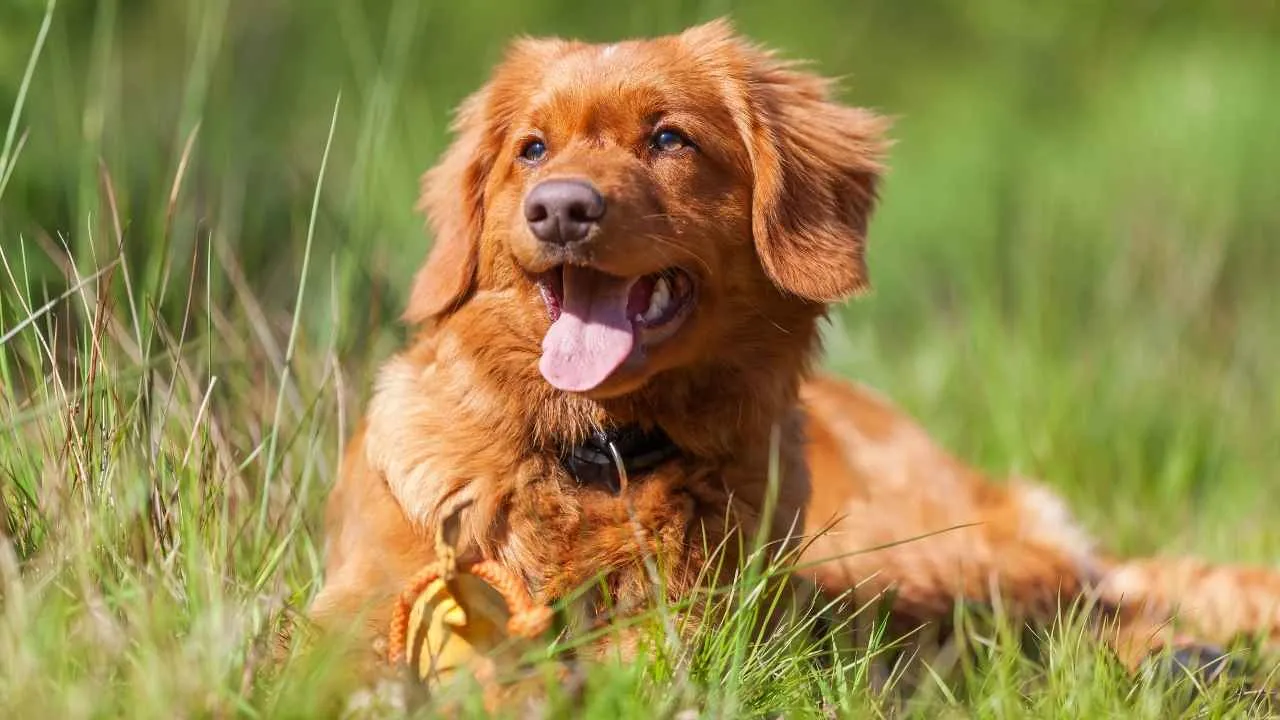
The Nova Scotia Duck Tolling Retriever, affectionately known as the “Toller,” is a compact, athletic retriever recognized for its vibrant orange to deep red coat, white markings, and iconic plumed tail. Its water-repellent double coat, webbed feet, and muscular build make it a natural swimmer and a resilient outdoor companion. Originally bred for duck hunting, this breed is built for cold, wet environments and long working days.
Tollers are highly intelligent, lively dogs with a playful spirit and sharp focus. Their trainability and enthusiasm for tasks make them ideal candidates for sports such as agility, flyball, obedience, and tracking. However, their cleverness means they can also be mischievous if not mentally engaged, often using their problem-solving skills to outwit their owners.
As noted by WebMD, they are the smallest breed of retriever recognized by the American Kennel Club (AKC). They’re highly active members of the sporting group.
This breed has a fascinating hunting history. The name “Toller” comes from the breed’s unique method of luring waterfowl, called “tolling.” By mimicking the playful movements of foxes along the shoreline, Tollers attract curious birds into shooting range. Once the birds are within reach, the hunter calls the dog back, takes the shot, and the Toller retrieves the downed birds from the water.
While affectionate and social, Tollers are not overly vocal and typically only bark when necessary. They rarely drool and are generally clean companions. Their high energy levels and alertness make them responsive to commands, but they do best with positive reinforcement and a consistent routine. Early socialization is key to shaping a well-mannered adult dog.
A notable concern with the breed is its low genetic diversity. Studies suggest that around 90% of the founding population’s genetic variation has been lost due to inbreeding, which could contribute to potential health issues over time. Despite this, the Nova Scotia Duck Tolling Retriever remains a spirited, capable, and unique breed, well-suited for active families and working dog enthusiasts.
7. Vizsla
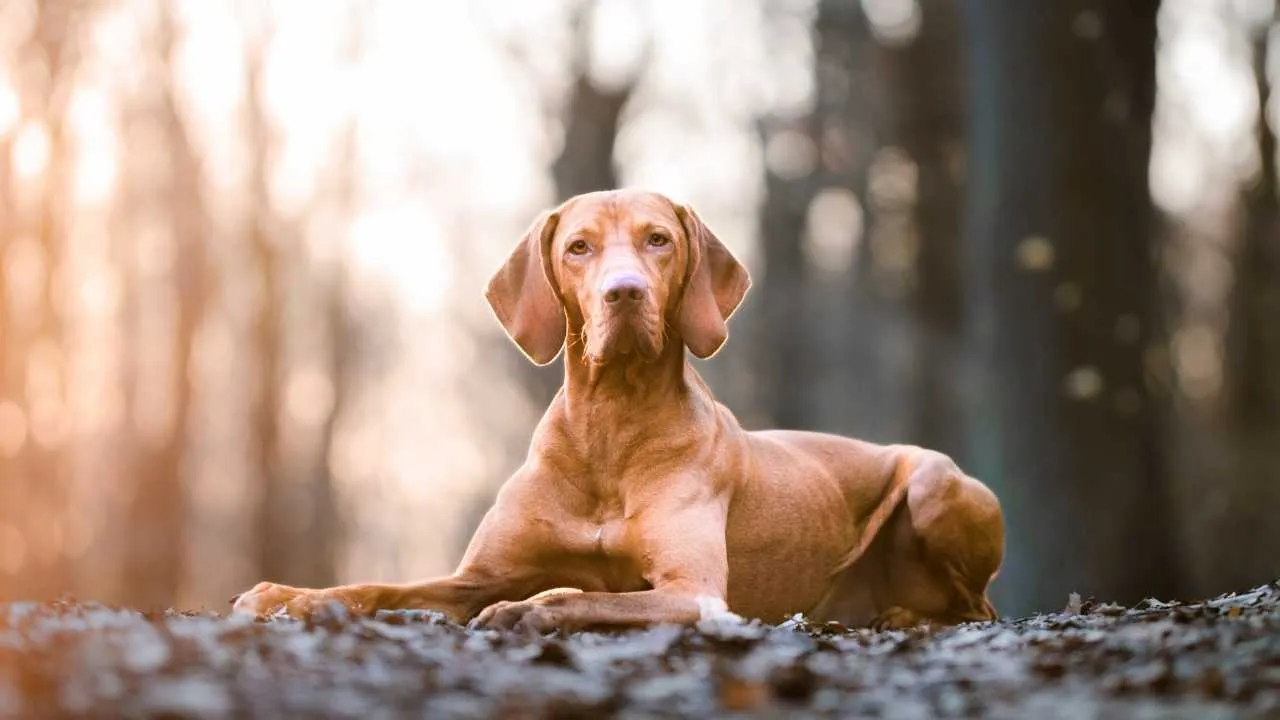
The Vizsla, also known as the Hungarian Pointer, is a sleek, red-coated sporting breed developed in Hungary for pointing and retrieving game. Celebrated for their agility, speed, and endurance, Vizslas thrive in active homes that can meet their high physical and mental stimulation needs.
Nicknamed “Velcro dogs,” Vizslas form deep bonds with their owners and dislike being left alone. Their affectionate, loyal nature makes them ideal for those seeking constant companionship, though their clinginess may not suit everyone.
Highly intelligent and eager to please, Vizslas excel in roles beyond hunting, including agility, obedience, and search-and-rescue. Their cooperative temperament and quick learning ability also make them excellent family companions when well-trained and socialized early.
Grooming is minimal, thanks to their short, smooth coat, which requires only occasional brushing. Routine care for nails, ears, and teeth keeps them in top condition, with slightly higher maintenance needed for the rare long-haired variety.
The breed’s journey to the U.S. began in 1950, when one was smuggled out of Communist Hungary. Since then, Vizslas have risen in prominence, most notably through Chartay, the first dog in AKC history to earn championships in five disciplines, underscoring the breed’s remarkable versatility.
8. Weimaraner
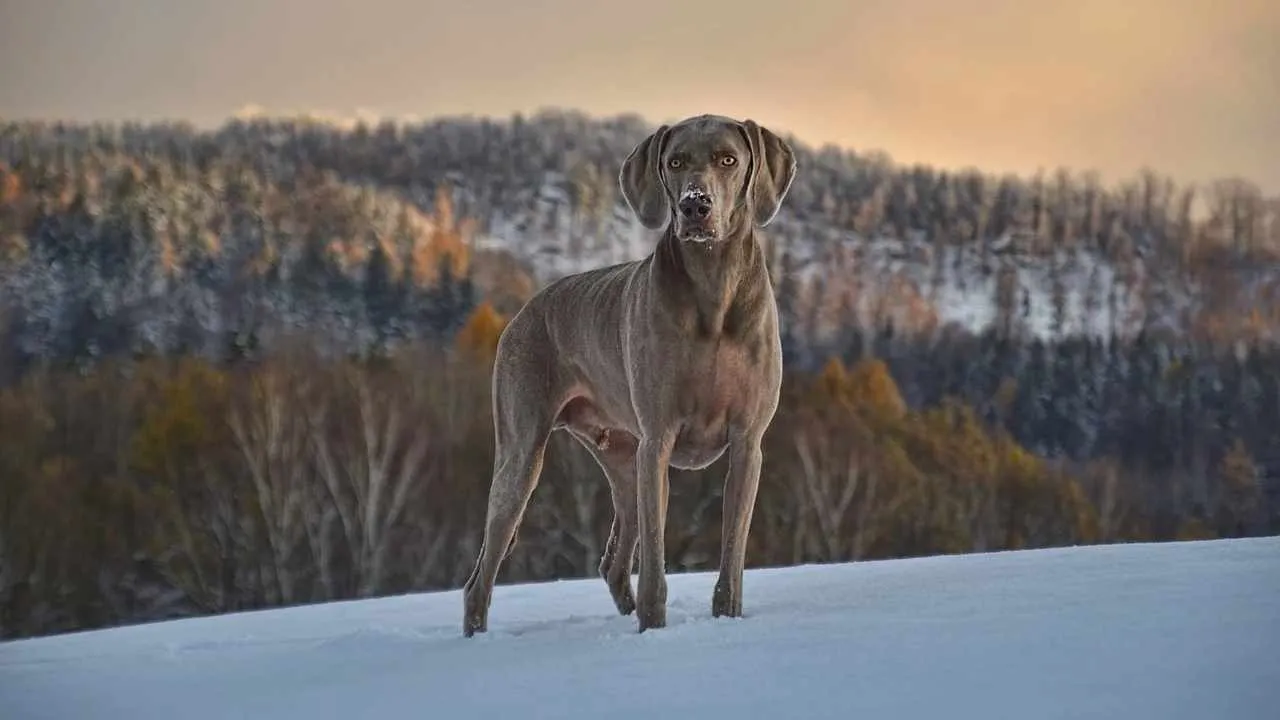
The Weimaraner, often called the “Gray Ghost,” is an elegant and athletic breed that originated in Germany as a large-game hunter for noble families. As hunting needs changed, the breed was refined into a versatile gun dog, skilled in tracking and retrieving birds with precision. Its introduction to the U.S. in the 1920s by Howard Knight helped the breed gain international recognition.
With a sleek silver-gray coat and graceful build, the Weimaraner is known for its speed, agility, and keen scenting abilities. Its stealthy hunting style and sharp instincts make it a strong competitor in activities like tracking, field trials, and agility. Puppies are born with soft stripes that quickly fade, and their eye color transitions from blue to amber or gray as they mature.
Weimaraners are affectionate, loyal, and emotionally attuned to their families. They are gentle with children, yet protective and courageous when needed. Their calm demeanor indoors contrasts with high outdoor energy, making them ideal for active households that also enjoy relaxed downtime.
The breed has earned a cultural spotlight, with celebrities like Grace Kelly among its admirers and artist William Wegman famously featuring Weimaraners in his work. Their striking looks and quiet elegance have made them icons beyond the hunting field.
Though generally healthy, Weimaraners are prone to issues like hip dysplasia, eye disorders, and bloat. With regular veterinary care, proper diet, and an active lifestyle, they can enjoy a healthy lifespan of 12 to 15 years.
9. Portuguese Water Dog

The Portuguese Water Dog (PWD) is a versatile breed originally bred to assist Portuguese fishermen with tasks like herding fish and retrieving equipment. Its webbed feet, swimming ability, and waterproof coat made it ideal for life at sea. Though the breed nearly faced extinction in the early 1900s, efforts to revive it succeeded, and it gained AKC recognition in 1983.
Energetic and highly intelligent, the PWD excels in water-based activities and dog sports. Its natural ability to swim long distances and retrieve items makes it well-suited for tasks like water trials and retrieving, similar to other hunting dog breeds. This breed’s drive and trainability make it a great companion for active individuals.
Physically, the PWD is a muscular, medium-sized dog with a curly or wavy coat. It comes in various colors and requires regular grooming, with styles like the “retriever clip” or “lion clip.” Despite its rugged appearance, the breed is affectionate and forms strong bonds with its family.
The PWD’s friendly, people-focused temperament makes it an excellent family companion. Its high energy and eagerness to engage with humans ensure it thrives in active households, balancing its working instincts with a loving demeanor.
With its adaptability, stamina, and keen intelligence, the Portuguese Water Dog excels in dog sports like agility and dock diving. Its ability to perform in both water and land activities, along with its strong work ethic, makes it a top choice for those seeking a loyal, energetic sporting dog.
Conclusion
Sporting dog breeds offer the perfect balance of affection, athleticism, and instinct. From the English Springer Spaniel to the Cocker Spaniel, these active breeds are not only eager to please but also excel in tasks like upland bird hunting and small game hunting.
Whether it’s the Chesapeake Bay Retriever’s rugged stamina or the Boykin Spaniel’s agility in dense cover, each breed brings unique strengths to the field. Their roles as versatile bird dogs and loyal companions make them ideal for hunters and families alike.
For those seeking the right breed, consider the physical characteristics, affectionate temperament, and keen sense of these high-energy dogs. From pointing breeds like the German Shorthair and English Pointer to classic bird dogs like the English Setter and Brittany Spaniel, many of these purebred dogs are proven performers across terrains, from South Carolina wetlands to Upper Midwest fields.
Whether you’re drawn to the curly-coated retriever’s endurance, the wirehaired pointing griffon’s versatility, or the plott hound’s drive in fox hunting and wild hog tracking, these popular breeds remain the best hunting dogs and excellent companions for those living an active lifestyle or covering great distances.


